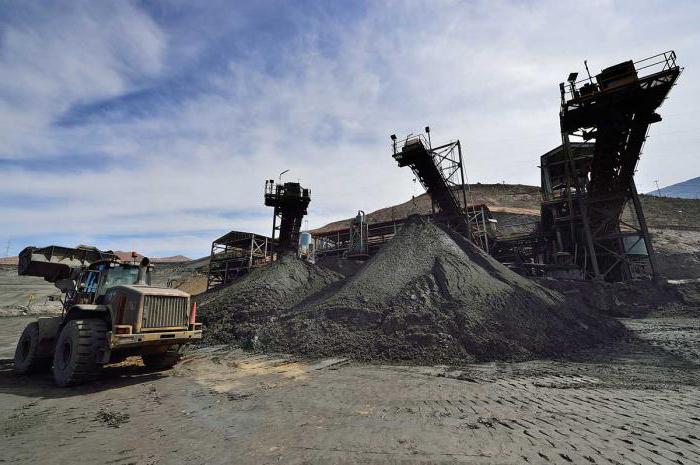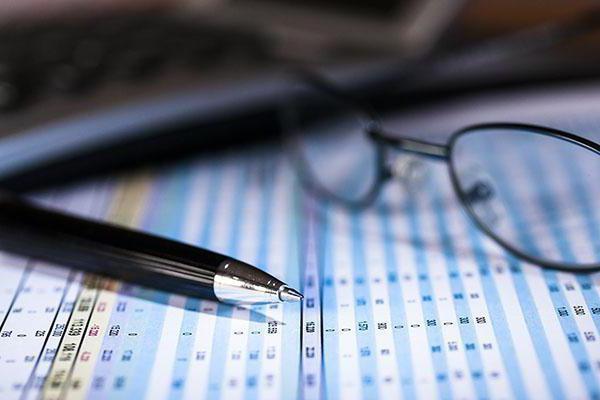Every organization includes objects classified as fixed assets for which depreciation is charged. Within the framework of this article, it will be considered what is the depreciable cost (IAS 16), how the depreciation deductions are made, what assets of the balance sheet need to be depreciated.
Depreciation of OS
In fact, depreciation is expressed as a phased transfer of costs allocated for the acquisition of fixed assets (fixed assets) to costs (cost) of output. Depreciation is predefined by paragraphs 17-25 of PBU 6/01, approved by Order of the Ministry of Finance of the Russian Federation.
Amortized cost is the purchase price of an object, taking into account all costs, less the residual value — the amount that can be obtained upon liquidation of the asset. In practice, resale value is often low, so more often it can be neglected.

The residual value is calculated as the initial purchase value of the asset minus the calculated depreciation. Amortized replacement cost is the accumulated depreciation amount.
The following legal entities can credit depreciation:
- the organization itself - on property that is its property;
- lessee - for OS assets leased under the contract;
- lessor - for leased real estate;
- lessee or lessor - for fixed assets transferred under a finance lease agreement (according to the terms of the contract).
Below we will consider the accrual procedure and give a decoding of such concepts as residual, replacement and amortized cost. IFRS, RAS and other standards and regulations do not contradict the following material.
Fixed assets subject to depreciation
The fixed assets subject to depreciation include buildings, structures, tools and other objects presented in material form, whose service life at the time of the operation is more than one year.
The composition of fixed assets includes, among other things, natural resources (for example, water, mineral resources) and land plots. However, in the balance sheet they are always accounted for separately at their purchase value. This is due to the fact that the properties of natural objects practically do not change after time. An exception may be natural areas where mining takes place. In such cases, the bowels are depleted, so the calculations are carried out in a slightly different form.

Depreciation cannot be accrued on non-profit organizations. For the property in question, depreciation is written off to account No. 010, which is used to calculate depreciation of fixed assets. If the OS is a residential building (dormitory, residential building, etc.), it is also not deducted through accounting at amortized cost. Exceptions are only objects that are listed in the balance sheet on account 03 and generate income.
Depreciation is subject to a property that falls under any of the following conditions:
- is the property of the organization;
- consists in operational management;
- acts as an object of lease.
The legislation allows not to accrue depreciation and write off expenses immediately after the purchase of fixed assets, if:
- Depreciable cost of fixed assets - not more than 40,000 rubles;
- An OS is a brochure, book, or other print publication (the price does not matter).
Depreciation Procedure
To register an object in the balance sheet as a fixed asset, it does not matter at what point in time it will begin to be used. It must be in a condition sufficient for its use. This rule also applies to property subject to mandatory registration with state bodies. Guidelines No. 91n indicate that any property should be immediately registered as soon as the initial cost of the depreciable property has been calculated. That is, the owner has no need to wait for the moment of legitimization of the authority to the object after submitting the relevant documents to the registration authority.
After the month in which the property was taken into account, depreciation begins to accrue every month. The accrual period completely coincides with the service life of the fixed asset. Accordingly, depreciation deductions end after the month in which the property is completely deducted from the balance sheet of the company or organization.

Depreciation is accrued evenly until the end of the service life of the facility. It stops accrual only if:
- modernization and reconstruction of the OS are carried out, and the duration of these works is more than one year;
- fixed assets were frozen for a period of three months.
The rest of the time, depreciation charges should be regular. Depreciation is charged without taking into account the fact of using the fixed asset, even if the work is seasonal, or equipment is being repaired at the facility.
OS Operation Period
The following parameters are taken into account in order to calculate the useful life (STI) of a property object:
- work schedule and number of shifts;
- the influence of the surrounding aggressive environment;
- the service life given in the accompanying documentation for the OS;
- additional restrictions on the application (contractual, regulatory, legal, etc.).
Each company independently establishes a JFS according to PBU document 6/97 of 01/01/1998. Most companies prefer to apply tax classification of fixed assets, divided into various depreciation groups. This possibility was provided for by a special Decree of the Government of the Russian Federation No. 1, appointed on January 1, 2002.
The methods for determining the STI, according to paragraph 7 in PBU 1/2008, are without fail fixed in the accounting policy of the institution. The predefined application period does not need to be revised, not counting those moments when the organization carries out repair work on the operating system that increases the previous performance of the facility. This may be, for example, modernization, reconstruction and other restoration activities.
But in this situation, it is worth paying special attention to the fact that each institution has the statutory right to make an independent decision on the revision of the reconstruction of the reconstructed object and whether the service life needs to be changed or not.
OS previously operated
If an organization acquires an object that has already been used, the depreciation value is calculated in the standard manner, but with the obligatory inclusion of all costs associated with the acquisition of this object.

At the same time, its service life should be reduced by the time of its actual use by the previous owner. And only in this case, depreciation is assigned on the basis of the newly calculated time of service of the property.
Depreciation Methods
Currently, in practice, several methods of calculating depreciation are used in accounting, based on p.18 of PBU 6/01. When using any of them, the amortized cost is calculated first of all - this is a necessary condition for further calculations.
If the depreciation method has already been assigned to the operating facility, then it cannot be changed for the entire time of its operation. Also, often in the balance sheet all fixed assets are combined into similar groups by type (for example, transport, structures, etc.).At the same time, to simplify the calculations, for all funds included in the composition of such a group, the same method of calculating depreciation is used.

However, it should be noted that the principle of creating homogeneous groups is in no way spelled out in official documents. But experienced accountants recommend creating property groups, given their primary purpose. In this case, you can follow the Methodological guidelines No. 91n, where there are examples of such groups of objects as transport, buildings, etc. The regulation on combining various operating systems into groups should be entered into the accounting policy of the institution.
All changes in the organizational documents of accounting should come into force on January 1 of the year following the year of adoption of the approved order. This rule applies, in particular, to those changes to which the calculation of amortized cost will be subject.
The company, not taking into account the chosen method of crediting depreciation, must calculate in advance the amount of write-off of depreciable deductions for the year. The exception is the calculation of deductions in proportion to the volume where depreciation has to be calculated every month according to a predetermined formula.
Linear
The simplest and most common calculation is the linear method for calculating depreciable value. The result of the accruals in calculating the annual depreciation in this case is calculated as the initial cost of the depreciable property, taking into account all possible costs, multiplied by the depreciation rate, calculated from the time of operation of the property.
Formulas
- Nbut = 100%: SPI,
where nbut - derived depreciation rate, and SPI - the number of years of the service life of the asset.
- BUTg = Pwith x Nbut,
where nbut - derived depreciation rate, Pwith - initial purchase value of the OS, Ag - depreciation annual rate.
- BUTm = Ag : 12,
where am - depreciation calculated per month, Ag - depreciation annual rate.
Reduced Balance
The use of this method is most optimal in accounting, subject to a gradual decrease in the effectiveness of the use of property. The calculation of annual depreciation occurs due to the multiplication of the residual value, the deduced depreciation rate calculated from the SPI OS, and the acceleration indicator, which has a value of no more than 3.

The size of the coefficient should be predetermined in the accounting policies of the institution. Organizations do not have the authority to spontaneously establish this ratio; when it is introduced, it is necessary to rely on regulatory documents that determine the conditions under which accelerated depreciation is permissible.
Calculation Formulas
- BUTg = Owith x Nbut x kaccele,
where ag - calculated annual depreciation rate, Nbut - derived depreciation rate, Kaccele - acceleration indicator, Оwith - residual price.
The residual value of depreciable property is calculated as the initial purchase value minus all accrued depreciation over the past service life of the property.
By the sum of the numbers of years SPI
When using this method, depreciation is equal to the multiplication of the initial purchase cost of acquisition and the amount of time remaining until the completion of the JFS, and the subsequent division by the sum expression of the number of years of the JFS.
Formula
- BUTg = Nwith x tSPI : SCHLSPI,
where ag - depreciation rate for the year, SCHLSPI - total number of years SPI, CHSPI - the number of years SPI, Pwith - The initial amortized cost of an asset.
In proportion to the volume of production
This type of depreciation payments is counted every month as the value of all developed products in a particular month, multiplied by the initial purchase value of the depreciable property, and divided by the entire output for the entire time of use.
Formula
- BUTm = Pwith x ovf : OBP,
where am - monthly depreciation rate, OBf - coverage of monthly production, Pwith - initial cost-based cost of the facility, OBP - The estimated coverage of the entire output for the whole time.
Examples
In December, Vinnie acquired a honey bottling line, the total cost of which amounted to 240 thousand rubles, and SPI - 5 years. It is necessary to calculate the depreciation of the acquired company, taking into account all existing conditions.
1. Using the linear method.
Nbut = 100% : 5 = 20%;
BUTg = 240,000 x 20% = 48,000;
BUTm = 48 000 : 12 = 4000.
2. The use of gradually reduced residue at Kaccele = 1.
Nbut = 20%;
1 year: Ag = 240,000 x 20% x 1 = 48,000, Owith = 240 000 – 48 000 = 192 000;
2 yearsg = 192,000 x 20% = 38,400, Owith=240 000 – 48 000 – 38 400 = 153 600;
3 yearsg = 153,600 x 20% = 30,720, Owith = 122 880;
4 yearsg = 122,880 x 20% = 24,576, Owith=98 304;
5 year: in the last year, the final depreciation rate is calculated as the residual value of the depreciable property minus the cost of liquidation. Suppose that the line can be sold after a year for 50,000 rubles. Then the annual depreciation will be equal to 48 304 (98 304 minus 50 000).
3. Write-off of the value for the accumulated number of years of JFS.
SCHLSPI= 1 + 2 + 3 + 4 + 5 = 15;
1 year: Ag = 240,000 x 5: 15 = 80,000;
2 yearsg = 240,000 x 4: 15 = 64,000;
3 yearsg = 240,000 x 3: 15 = 48,000;
4 yearsg = 240,000 x 2: 15 = 32,000;
5 year: Ag = 240,000 x 1: 15 = 16,000.
4. Write-off of cost depending on the volume of output.
Suppose that the company "Supercasserole" acquired the machine for 120,000 rubles. According to the attached documentation, with its help you can release one hundred thousand caps. For the first month, 9 thousand caps were issued, for the second - 5 thousand. Then:
1 month: Am = 120,000 x 9,000: 100,000 = 10,800 rubles.
2 monthsm = 120,000 x 5000: 100,000 = 6,000 rubles. etc.
In all the examples cited, the depreciable replacement cost will be the total depreciation accumulated over a certain period of time. For example, in the latter case, when calculating in two months, it will be equal to 16 800 (10 800 + 6000).
Depreciation of intangible assets
Intangible assets are of the following types:
- these are rights to programs, trademarks, inventions, selective achievements, unique models;
- the business reputation of the company is the difference between the purchase value of the company and the price of its net assets.
Typically, the period of use of intangible assets is determined by the duration of the certificate, accompanying patent, etc. If it is difficult to determine, the accountant must identify it, taking into account PBU 14/2007. The withdrawn period of operation cannot be higher than the life of the company itself.
Typically, depreciation of intangible assets is accrued by the distributed-linear method over the entire life cycle. However, the use of additional depreciation methods is also permitted.
Depreciated accruals of the business reputation of the company are carried out for 20 years (if this period does not exceed the period of the company) in a linear manner. This order of deductions is predetermined by paragraph 44 of PBU 14/2007.
A group of homogeneous intangible assets must use the same depreciation method. Amortized cost of an asset is calculated by analogy with fixed assets.
Depreciation of financial instruments
Financial liabilities are mandatory payments of an entity as a result of financial arrangements. Financial assets are presented from a combination of securities and funds, allowing the company to receive additional income.
Depreciation is charged using the effective interest method as the difference between the initial purchase price and the price at the time of full repayment minus write-offs of bad debts and impairment of securities. And the amortized cost is the purchase price of financial assets and liabilities minus the payments made to pay the debt +/- depreciation.

An effective interest rate is necessary to discount expected payments over time. Discounting is carried out at a compound interest rate. In other words, the effective rate is the level of income in relation to their repayment, indicates the rate of return of finance.
Compound interest calculation formula:
Fn = P x (1 + i)n,
where Fn is future payments, P is the current value of the asset, I is the interest rate, n is the period for which the payment is calculated.
Example
The Bank issued a loan of 100 thousand rubles, which must be repaid after 5 years in the amount of 150 thousand rubles.Substituting these data in the formula, the equation is obtained:
150,000 = 100,000 x (1 + i)5. Hence I = 0.0845 x 100% = 8.45%. Then the interest calculation will look like this:
1 year: 100,000 x 1,0845 = 108,450 - depreciable expenses at the end of the year;
2 year: 108 450 x 1.0845 = 11 7614;
3 year: 117 614 x 1.0845 = 127 552;
4 year: 127 552 x 1.0845 = 138 330;
5 year: 138 330 x 1.0845 = 150 000.
Similarly, calculations are carried out with an already known interest rate.
Summarizing
As can be seen from all of the above, the amortized cost is the purchase price of the assets minus the cost of their liquidation. Depreciation also allows you to gradually write off the entire amortized cost of property with the subsequent release of cash. As a result, it turns out that the organization or enterprise fully pays off the cost of acquiring real estate.